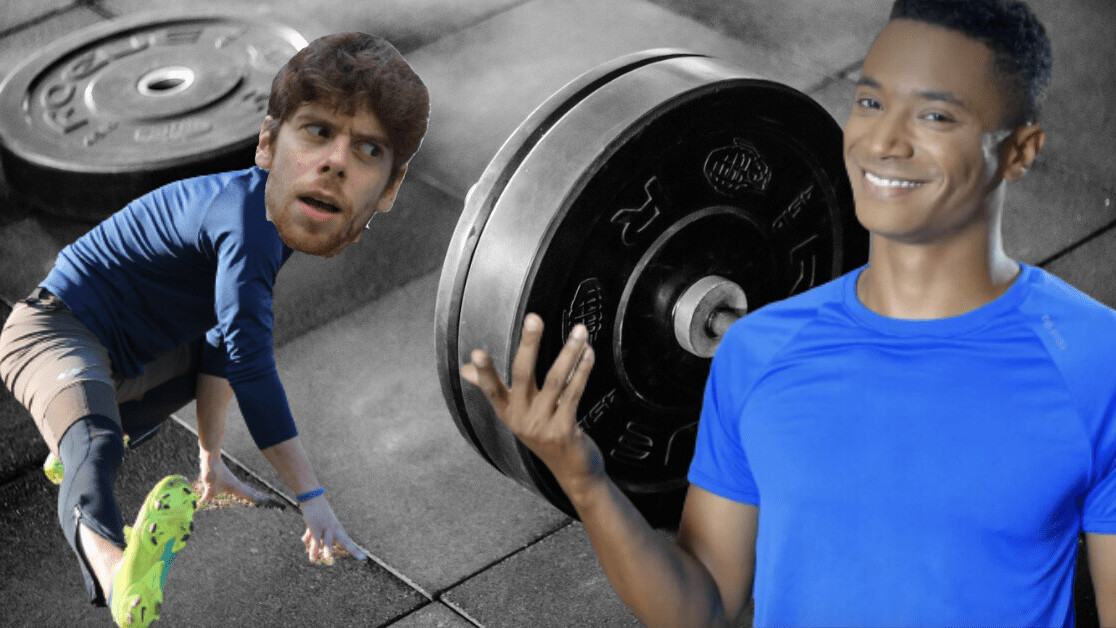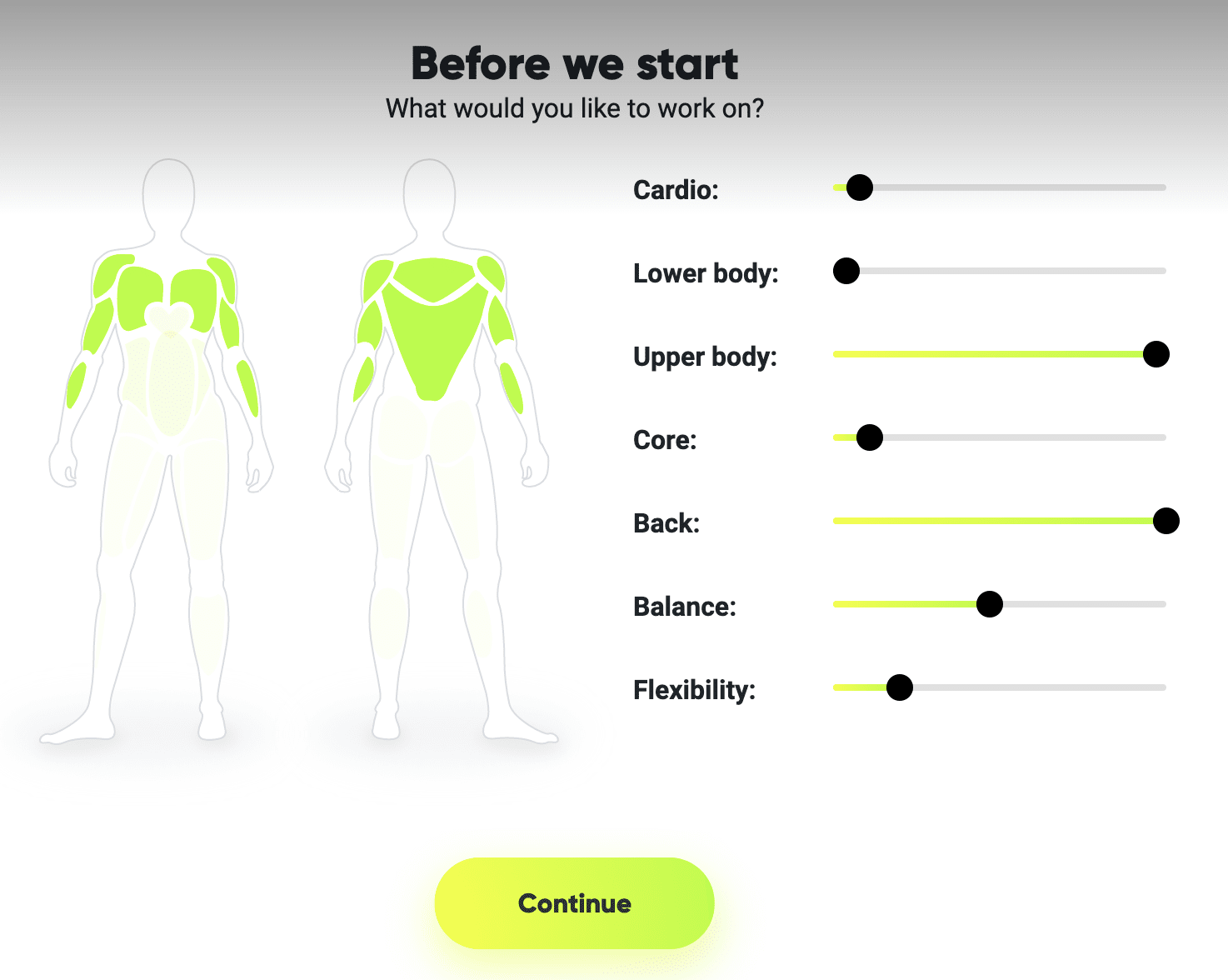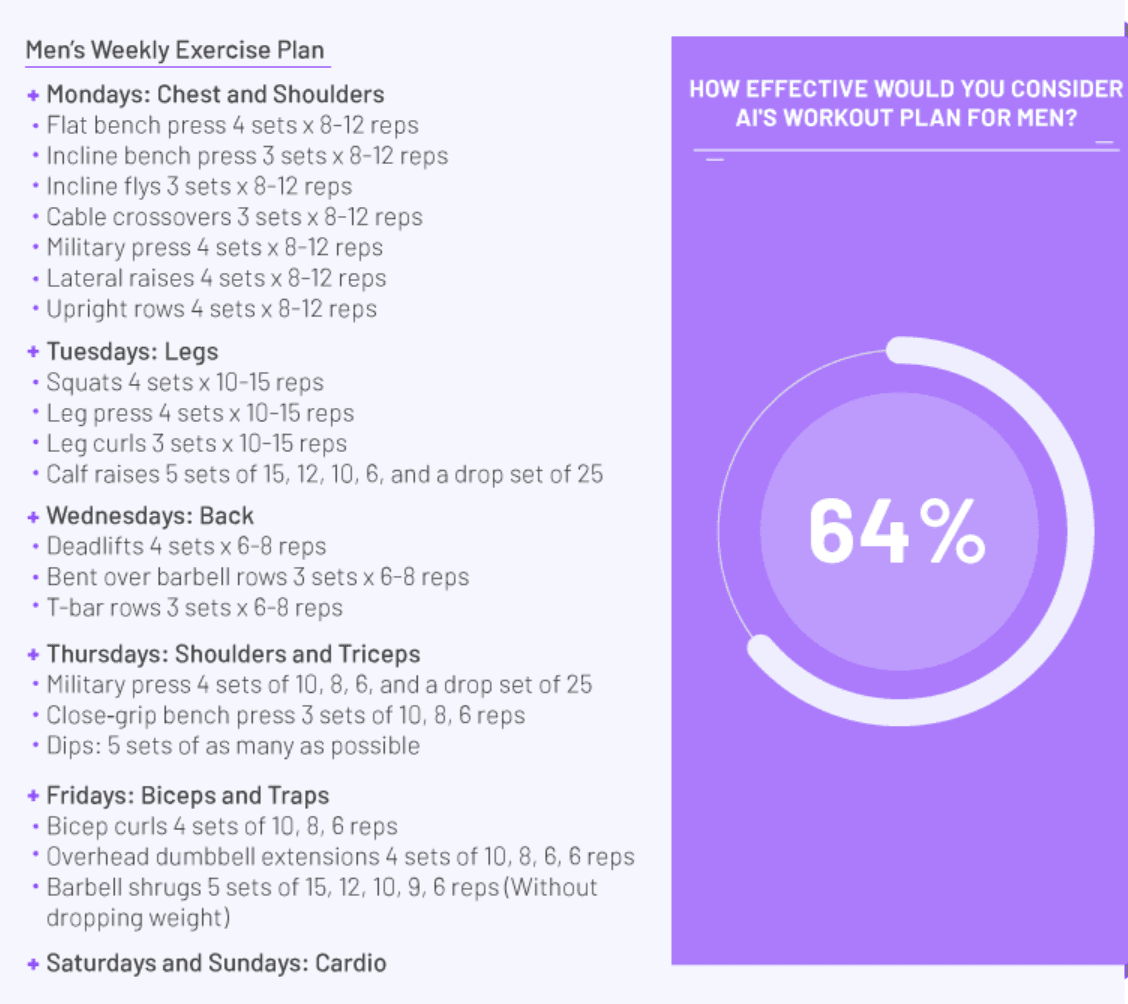
Welcome to Adventures with AI, a column exploring what happens when artificial intelligence takes control of everyday tasks.
I enjoy exercise, but I’ve always hated gyms. I loathe them for many reasons: the pugnacious meatheads hogging the bench; the vacuous EDM pounding my brain into mush; the putrid blend of BO dripping off the walls; the eye-watering fees; the fear of being judged. Gyms are ghastly places frequented by some of the most unpleasant people on Earth.
After years of enduring these assaults on my senses, I decided enough was enough. I cancelled my membership, built a home gym, and started playing five-a-side football with friends. It was one of the smartest decisions I’d ever made.
[Read: Twitter analysis suggests football fans would give video referees the red card]
Then COVID-19 arrived. My domestic shelter quickly turned into a prison and I lost all motivation to exercise. What I needed was a personal trainer to call me a scrawny weakling until I collapse in a pile of blood, sweat, and tears. But quality sadomasochism doesn’t come cheap.
Keen to save my pennies for the impending apocalypse, I sought a more affordable alternative — a virtual personal trainer.
Meet Jeremy:

Jeremy offers video workouts on the fitness app Kemtai.
As you train in front of your laptop’s webcam, computer vision monitors over 40 points on your body. The virtual trainers use this analysis to provide real-time feedback on your form. After each exercise, you receive a mark out of 100.
“We compare your movements to the trainer’s movements and whenever there is a difference, we guide you in how to improve it,” Kemtai cofounder Mike Telem tells me. “All of this needs to happen in a few milliseconds so that you feel like the feedback is punctual.”
I was mildly apprehensive about using AI to improve my precarious health. But Jeremy has kind eyes. They earned my trust.
Hitting the gym
Kemtai’s most interesting feature is the workout wizard, which creates personalized routines around your goals, physique, and available time.
I set my aim as losing weight, select intermediate level, and create my workout.

I press continue. Jeremy springs into action.
Keep pushing… Try harder… Try to deepen the stretch even more.
He’s giving me great feedback. I need to go lower on my squats; I should bring my knees closer to my elbows when I’m doing mountain climbers. They’re mistakes I’ve probably been making for years. But my wrist up outward rotation is magnificent.

After 20 minutes, I’m shattered. I try to take a break by hiding from my webcam. But Jeremy instantly notices: “Return to starting position.”
I’m impressed by his vigilance and advice. Telem credits the accuracy to the training of the AI models:
While typically companies use mainly humans to annotate images and train their machine learning algorithms, we are able to optimize this process by using our own software to automatically annotate images and videos, which obviously accelerates the training process and improves its quality. This internal software can also highlight cases in which human intervention is required.
It certainly feels like an effective workout. But does it impress the experts?
I ask Kimberley Mitchell, a personal trainer at OriGym Centre of Excellence, what she thinks.

Mitchell says computer vision has real potential to improve the user’s technique:
Further, there is the real-time feedback feature that can ensure that your next rep is better than the last, creating a domino effect of improved exercise performance during your set.
She does add that AI can’t replicate all the benefits of a real-life personal trainer. They can spot things that a computer can’t and make more detailed adjustments to their client’s needs. She also wondered if Kemtai occasionally had technical issues.
In my experience, glitches are very rare. At one point, Kemtai stops counting my leg lifts, dooming me to repeat the exercise until my leg falls off. I escape this grisly fate by hitting the exit button.
Another issue involves the reliance on a webcam. You need a pretty large space for Kemtai to capture all your body movements. Telem suggests connecting my laptop to a TV, which makes a marked improvement.
The other limitation of Kemtai involves the exercises. At present, the workouts involve minimal equipment and only light weights. Telem plans to add more gear in future, but launched the app with minimal kit, as that’s all most people have. To bulk up a bit, I’ll have to try something else: my old frenemy GPT-3.
No pain, no gain
In the last edition of Adventures with AI, I whipped up some cocktail recipes produced GPT-3. The results were mixed (sorry). Undeterred, I gave the text generator the chance to make me swole.
FitRated, a workout equipment review site, recently used the model to generate workout routines and meal plans.
I tried out one they created by feeding GPT-3 the following prompt:
What kind of workout plan would you recommend for weight loss, that includes exercises, frequency of exercise per week, rest days, and a meal plan? Give me the recommendations for an American man who is overweight by 30 lbs.
I skip the meal plan, but give the workout a go.

Personal trainers were pretty impressed by the plan. More than half (55%) of the ones surveyed by FitnessRated said they’d try it themselves.
Mitchell, the trainer from OriGym Centre of Excellence, also thought it was a good plan. But she did say it could overwhelm people who are new to exercise:
It’s typically a positive experience for those who don’t require a high level of personalisation. However, for anybody seeking out the same results a personal trainer would provide, this may not be the option.
I don’t doubt it’s effective, but the workout was boring, exhausting, and extremely time-consuming. They made me miss Jeremy. He’s kind, knowledgeable, and has that personalized touch.
I boot up Kemtai once more, and there he is: open-armed, smiling brightly, ready for another class.

He’s not quite the same as a real-life personal trainer, but at least he’s saving me from going back to the gym.
The premium version of Kemtai costs $19 a month or $190 for a year. There’s also a selection of free workouts on the website.
Greetings Humanoids! Did you know we have a newsletter all about AI? You can subscribe to it right here.
Get the TNW newsletter
Get the most important tech news in your inbox each week.




